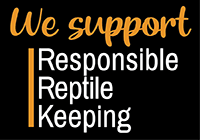What role does a Clean up Crew play in a Bioactive terrarium?

What role does a Clean up Crew play in a Bioactive terrarium?
A Bioactive enclosure is a self-sustaining biome based on your animal's native environment. To keep it functioning properly the biome relies on microbiological, fungal and mechanical process’. For the mechanical process, it needs a clean up crew established in the terrarium. A clean up crew typically consists of arthropods (springtails), crustaceans (isopods), millipedes, earwigs and other soil dwelling decomposers. These unique living organisms will help establish a healthy relationship between the soil, plant roots and biodegradables inside the enclosure to thrive. One of the best parts about this micro-maintenance crew is you'll rarely see them inside your terrarium.
A Clean up Crew (or CUC), is a colony of microfauna, good fungal and bacterial process’ such as earthworms, mealworms, red wigglers, roaches,earwigs, millipeds, springtails and isopods that aerate the soil, take care of waste and organic matter in the enclosure and breaking it down into usable elements and minerals that the plants and soil can use. In the reptile hobby the most popular species to see used are springtails and isopods (otherwise known as rolly pollies or pill bugs).
Keeping and feeding any CUC is easy! Acting like a compost pile, they will decompose any biodegradables such as leaf litter, wood chunks, plant matter, mosses, bad bacteria, reptile shedding and waste to name a few. Taking advantage of the fact they will eat pretty much anything, offer a varied diet with fruits, vegetables, with less offered items such as fish foods, dried mushrooms and commercial reptile diets like The Dudes Bug Grub and dried pre-mixed crested gecko diet. These items should be offered and fed sparingly, smaller colonies once a week and larger colonies two to three times a week depending on how large and how fast they devour and decompose what is offered. The Dudes kit helps make culturing and seeding multiple enclosures simple.
Isopods- With a little over 10 thousand separate species they are commonly kept as pets and easy to find in the hobby. Dwarf isopods are best for reptiles that might prey on them so they don't get eaten. Some isopods can prey on your reptiles as well, it is important to research each species to make sure they can cohabitate happily. Mixing different species together can also be a challenge. It is important to look at where they like to spend their time in the terrarium, reproduction rate and if they will predate or outcompete eachother.
Springtails- Super small and harmless, their name comes from jumping up in the air when threatened. They will eat mold fungi, algae, decay - will eat fungus gnat eggs too making them extra useful for predatory pests. Staying in the bottom layers of the substrate or in higher humidity areas of the enclosure, sometimes hanging out with isopods in leaf litter. Most times the keepers will not see springtails after they are established in the terrarium.
Other options-
Earthworms, super worms, darkling beetles, mealworms, various roach species such as dubia, red runners and domino roaches all seem to be common, but are usually happily eaten by the inhabitants quickly. With that being said the population needs to be watched frequently so there is enough to control the bioactivity and to prevent them from outcompeting your essential CUC.
How does a clean up crew work with a drainage layer?
When setting up a terrarium that requires a drainage layer, it is best to use a screen between the soil and the drainage layer, depending on the type of drainage layer. This will still give the space needed for the soil to soak up the aerated water passing through the bottom layer while still giving the clean up crew access to moisture. There may be an instance when your CUC goes into your drainage layer. As long as it is maintained appropriately with water level, you should not have many deaths from venturing into the drainage layer. Springtails will float when on water so that is very helpful.
What to do when they over produce - If you are noticing that your established clean up crew has a very strong population in your enclosure the keeper will need to ensure that there is enough biodegradeables and food for the established population density. If some specimens need to be pulled it is pretty simple. Simply place down Bug Grub, carrot, banana or other type of food in the enclosure. This will draw the population to the item and simply pull them when you are able to place in them a good culturing container. If you are noticing your pet being consistently bothered by your inhabitant clean up crew, evaluating the population is very important. Too many isopods can easily prey or cause undue stress to your inhabitants.
Fungi and bacteria why is this necessary and does it replace the CuC?-
Utilizing and inoculating your substrate with different bacterial and fungal biological process’ is an important backbone to the overall structure and success of your bioactive terrarium. These process’ will reinforce the Nitrogen cycle in your terrarium as well as help with soil longevity and plant health. These process’ do not completely replace the CUC and is recommended to be used in conjunction. Many times you will see different types of fungi sprout up in your terrarium. That is a sign of a healthy terrarium and positive progression. Other types of molds may also appear in the substrate itself - As long as it is not black mold this is a positive and shows that your different fungal and bacterial strains are doing their job. The Bio Dude offers many different soil inoculants for your bioactive terrarium.
When choosing your clean up crew, it is important to research if the clean up crew's environment needs match those of the reptile. Keeping in mind all of these options are prey items even if they are not a regular part of the reptiles diet, use smaller dwarf species for smaller reptiles, and vice versa with larger reptiles, adding a lot of hiding places so that they aren't as available for consumption. Have a question or need a recommendation? Contact our customer care team at Customercare@thebiodude.com
- Josh Halter










